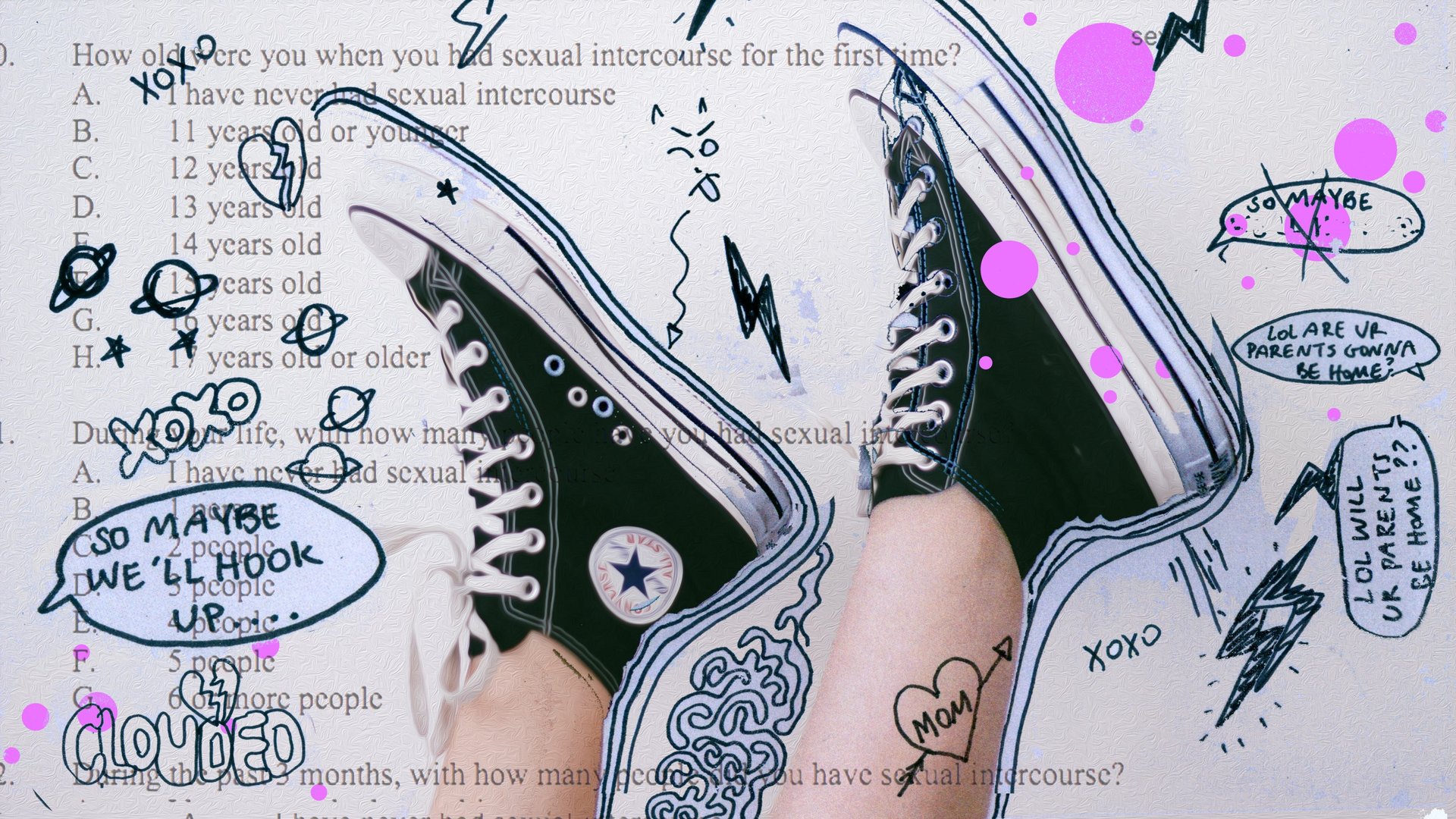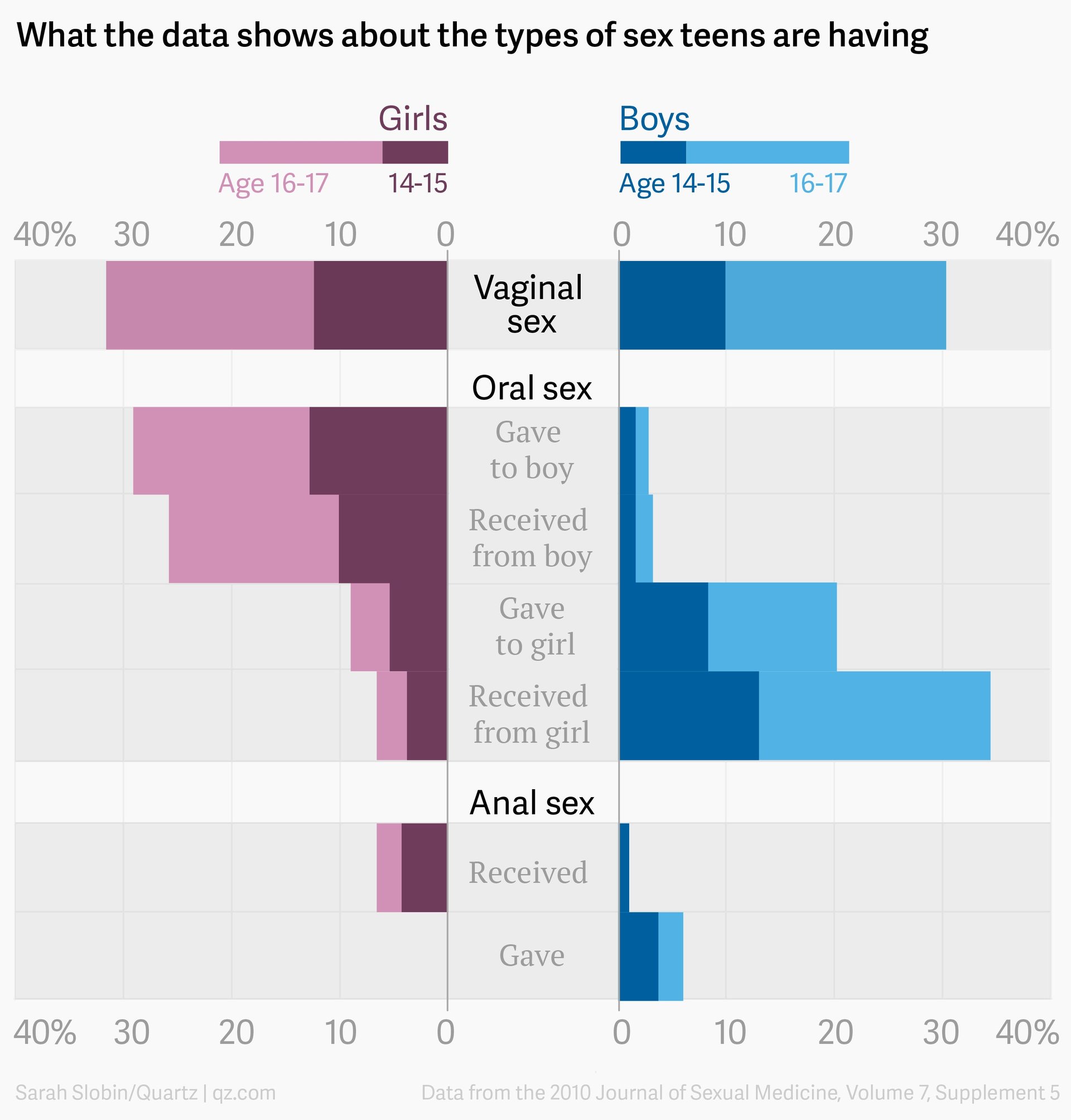Don’t buy the idea teens are having less sex until you take a closer look at the data
There have been a series of stories recently about how modern teens are delaying adulthood. Headlines responding to new research in Child Development (paywall) say that “Teens are growing up more slowly” and “18 is the new 15.” Apparently, this screen-addled, risk-averse generation is delaying dating, postponing getting a driver’s license, drinking less and having less sex.


There have been a series of stories recently about how modern teens are delaying adulthood. Headlines responding to new research in Child Development (paywall) say that “Teens are growing up more slowly” and “18 is the new 15.” Apparently, this screen-addled, risk-averse generation is delaying dating, postponing getting a driver’s license, drinking less and having less sex.
The claim teens are having less sex seemed entirely suspect to me, so I looked into the provenance of the statistics. The source is the Centers for Disease Control and Prevention, the US agency that monitors health and disease. The claim is true no matter how you slice the data.
It’s true because the question the CDC asks is “Have you ever had sexual intercourse?”
This is (basically) the same question that Gail Dines, a professor of sociology and women’s studies, told me she posed to a group of young women at a private high school recently, while giving a talk about the impact of porn on sexual health. Dines asked them “Have you ever had sex?” The response in the majority was, “No.”
Dines, however, followed up with another question: “I asked them, ‘So what do you do at parties then?’ and the answer was,‘Oh! …Blowjobs.’”
Ok, so oral sex is not technically sex, but neither is their answer here the entire picture. Dines says the high schoolers and middle schoolers she talks to tell her they are “hooking up,” which means everything from kissing to oral to anal sex.
You may want to dismiss her story as anecdotal evidence, but it’s not an isolated event. Dines is the founder of Culture Reframed, a non-profit that travels to conferences and schools around the world promoting education to combat pornography’s influence on pop culture. Over the last five years she has heard the same answers from thousands of adolescents girls from England, Australia, Sweden, Norway and the US.
Blank spaces in science
Jean Twenge is a psychology professor at San Diego State University and one of the researchers of the study, as well as the author of a book arguing that today’s “iGeneration” of kids is growing up unhappy and unprepared for adulthood. She told me that she wasn’t able to examine other types of sexual activity because the data only asked about intercourse.
In fact, according to a daisy chain of experts from Washington, DC, to the Kinsey Institute in Indiana, there is dearth of longitudinal data around teenage sexual norms.
Clinicians tend to look at teen sex in terms of risks in order to inoculate against those risks. So there are studies on teen sex and pregnancy, teen sex and sexually transmitted infections, teen sex and drug use, violence, condoms, abstinence, depression, coercion, victimization, HIV, same-sex orientation, violent imagery and pornography. (And this is an incomplete list.)
The data are lacking for several reasons:
- It is difficult to get funding to ask teens about sexual activity because some critics see the discussion as tacit consent. There is a history of teen sex studies being quashed by political opposition from members of Congress and conservative religious organizations that support abstinence.
- Stephanie Sanders, a professor and senior scientist at the Kinsey Institute, says there is a “privileging in scientific literature about intercourse.” Hence the CDC question.
- And mostly, because it’s complicated. There is no universal definition of what counts as sex. People might say, “it wasn’t sex because it was brief, or not consensual or, nobody had an orgasm. Or they might say that oral sex is not sex. On that debate the split in opinion is stark, often coming out 50/50.” say Sanders. “That is, until you ask ‘if your boyfriend had oral sex with another person, does that count as sex?’ You bet it does.”
The internet gets there first
Even if adolescents weren’t notoriously skilled at concealing their private lives from their parents, the digital divide has inflated adult misconceptions about what is happening behind closed doors.
Teens may be increasingly cloistered away in their bedrooms, as Twenge points out in her recent Atlantic article, but that doesn’t make them safer. They’re not benignly fiddling with their smartphones. If it takes a village, the contemporary village is social media and the village sex-ed instructor is porn.
We know that teens are sexting, and nudes are high-value currency in online courtship. Unfortunately, erotic pictures are also grist for shaming and extortion and in the darkest cases, used for grooming by predators.
In 2017, we know that many kids learn about sex from the internet before their parents work up the fortitude to have “the talk.” We know that the average age that boys first view pornography is 11. That 88% of scenes in the most-viewed sex videos include violence against women, and that repeated exposure at a young age to explicit content is deleterious to healthy sex.
US teen pregnancy and birth rates have declined, but sexually transmitted infections are up. Between 1991 and 2015, the percentage of teens who reported having had sex before the age of 13 decreased, from 10.2% to 3.9%.
Because again, the question the CDC asks is about sexual intercourse.
A snapshot of teen sex
To find data to fill in the gaps on the sexual norms of the high-and-middle schoolers Dines speaks to, I called Sanders’ colleague, Dennis Fortenberry, whom she calls ”one of the most outspoken docs I know on adolescent medicine.” Fortenberry is the director of adolescent medicine at the Center for Sexual Health Promotion at Indiana University-Bloomington; he, Sanders, and colleagues published a paper in 2010 in the Journal of Sexual Health assessing sexual behavior of adolescents in the US. Here is a chart of what they found:

I know, you can’t unsee it.
Unfortunately, this snapshot doesn’t show change over time. But both Sanders and Fortenberry tell me that when you measure the 14-18 cohort against their grandparents (or those ages 60+), they are having more anal sex, especially when you take into account that their elders have had a lifetime to accumulate sexual experiences.
As to oral sex, the trend is not as clear, but statistical evidence doesn’t rise from a void; an accumulation of anecdotal evidence precedes it. It’s not much of a leap to think that the prevalence Dines hears about could easily show up in the data, especially if the questions were asked of a broader age group. The behavior of middle schoolers, for instance, has yet to be quantified even though it’s been nearly a decade since the release of “Oral Sex is the New Good Night Kiss”– a controversial book and documentary whose main characters were 12-year-old girls.
Doctors on frontiers
Why do the data matter? Former US surgeon general Jocelyn Elders has said that in order for healthcare professionals to provide sexual health information to their patients, they must first have “the understanding of what the sexual behaviors are in the community and how they are manifested.”
Pediatricians are doubly disadvantaged in these efforts. Not only is “sexual intercourse” the only question science asks, many doctors are in the same position as the current generation of parents raising digital natives: pioneers in uncharted territory and on the less tech-immersed side of the spectrum.
A good illustration of this, is a story Dines told me about speaking to an audience of 3,000 at the National Conference of American Academy of Pediatrics last year (2016). She asked asked them what their concept of porn was. Not surprisingly, their references were to Playboy or Penthouse.
She then explained, what was once “soft-core porn” is now simply part of mainstream entertainment. What was once “hardcore”—and by this she means, the material you had to request the video-shop clerk fetch from the backroom—is now free and available on the internet to any curious child. For children who are beginning to shape their own sexual identities, this is the new normal and it’s having an impact.
Since then she has been fielding an onslaught of invitations to speak.
Selective silence
Although we live in a highly sexualized culture, we don’t talk about sex. Sex and nudity are all over cable TV in the US, but FCC rules about obscenity mean the words penis and vagina are not spoken during the primetime news. This paradox is not lost on adolescents.
Fortenberry points out that sexuality doesn’t develop in a vacuum, and young people learn very early “what is ok to talk about and what is not, often based on things that we are silent about.” When they can’t get a normalizing conversation, all they are left with are the images.
Parents are also resistant to including porn, oral, and anal sex in sex education. Pediatrician Cara Natterson, well-known for her bestselling series of gently-written, sweetly illustrated guides about changing bodies for young girls, works as a consultant teaching sex ed at K-12 schools in the US.
Because she starts her sessions by defining different types of sex, she has had a lot of feedback from parents saying,“Wait wait you don’t have to talk about anal sex, that doesn’t belong in sex ed!”
Natterson says hearing this sentiment marked a profound turning point in her practice. She realized that just like kids, parents need to be comfortable with the vocabulary. Without fluency with this new sex language, parents can’t speak about an entire suite of risk-taking behaviors.
None of this—the lack of data in scientific inquiry, the presence of porn, sexting, an increase in anal and (potentially) oral sex at young ages—fazes Fortenberry, the outspoken expert at Indiana University/Kinsey. He reminds me that today’steens didn’t invent sex and there have been changes in the way young people have been having sex for the last 80 or 90 years.
“One of my rules is that young people are astonishingly resilient” he says. “I sees a diversity of different stories, some of them are trajectories that are pretty amazing reflections of resilience and recovery.”
Which means that perhaps, 15 is just the new 15.